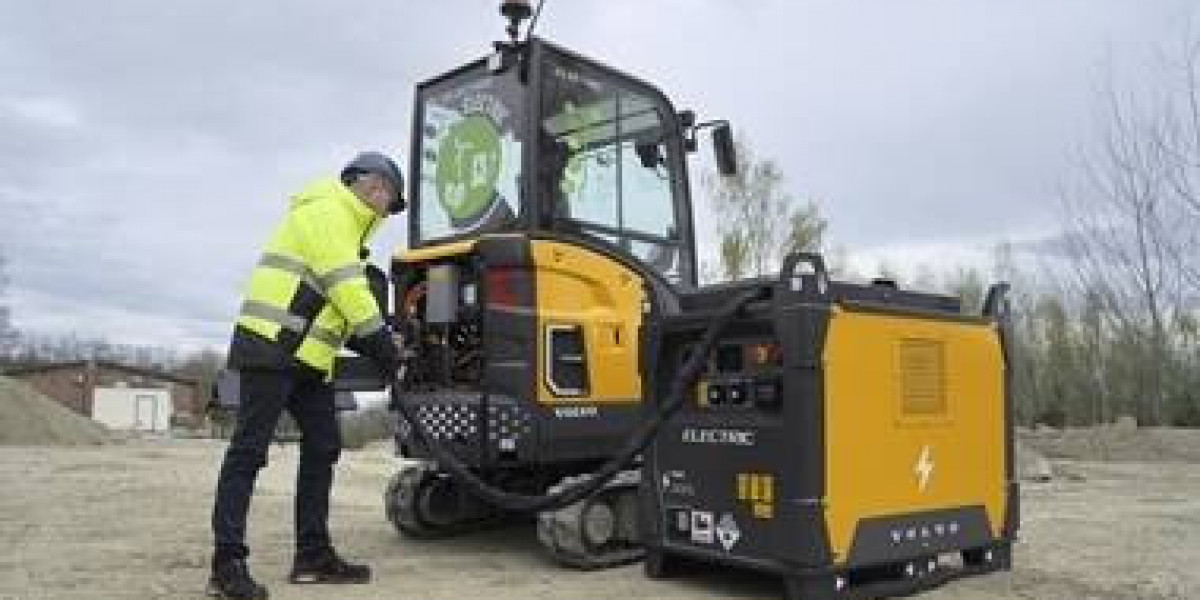The construction industry is undergoing a transformation as technological advancements are reshaping the way projects are executed. One of the most prominent shifts is the growing adoption of electric-powered equipment. Among the key trends in this transformation is the rise of compact electric construction equipment, a segment that is quickly gaining traction in both developed and emerging markets. As the need for sustainable and efficient machinery increases, electric compact equipment is poised to play a significant role in shaping the future of construction.
The Emergence of Compact Electric Equipment
Compact electric construction equipment, including electric mini excavators, skid steers, and backhoes, is being seen as a sustainable alternative to traditional diesel-powered machines. These electric counterparts are designed to provide the same level of power and efficiency while addressing environmental concerns such as carbon emissions, noise pollution, and fuel consumption. Their compact size also makes them ideal for working in tight or confined spaces, further enhancing their appeal in urban construction projects or sites with limited space.
Key Drivers of Market Growth
Several factors are contributing to the accelerated growth of the compact electric construction equipment market:
Environmental Concerns and Regulations: Governments worldwide are tightening regulations on emissions, prompting construction companies to seek alternatives to traditional fossil fuel-powered machinery. The shift toward electric equipment offers a solution to meet stricter environmental standards while reducing the carbon footprint of construction operations. Many regions are also offering incentives, such as tax breaks or grants, to companies investing in electric machinery.
Cost Savings: Although the initial investment for electric compact equipment may be higher compared to diesel-powered alternatives, the long-term operational savings make electric machines a financially viable option. Electric machines have fewer moving parts, which translates to lower maintenance costs. Additionally, they benefit from reduced fuel costs, contributing to overall cost efficiency over time.
Technological Advancements: Battery technology has made significant strides in recent years, leading to improvements in the range and power of electric construction equipment. Innovations in lithium-ion batteries have enhanced energy density, leading to longer operating hours and faster charging times. As these advancements continue, the performance gap between electric and diesel-powered equipment is narrowing.
Noise and Vibration Reduction: Electric construction equipment is significantly quieter than its diesel counterparts. This is particularly advantageous in urban construction projects or residential areas, where noise pollution can be a major concern. Reduced vibration levels also enhance operator comfort, potentially improving productivity and reducing fatigue.
Challenges Faced by the Market
Despite the promising outlook for compact electric construction equipment, there are several challenges that must be overcome:
High Initial Investment: While the operational savings of electric equipment are considerable, the upfront cost remains a significant barrier for many construction companies. Smaller firms, in particular, may be hesitant to invest in expensive electric machinery without clear immediate returns.
Battery Life and Charging Infrastructure: Although battery technology has improved, concerns remain over the lifespan and performance of batteries in electric construction equipment. The need for widespread charging infrastructure is also a limiting factor, especially in remote areas or regions with insufficient access to fast-charging stations.
Limited Availability of Models: The variety of compact electric equipment models is currently limited compared to their diesel counterparts. This can restrict the choices available to construction companies, particularly when specific equipment types are required for a project. However, as demand grows, manufacturers are likely to expand their portfolios.
Operational Limitations: While electric construction equipment is ideal for many applications, it may not yet be suited for heavy-duty tasks that require sustained power over extended periods. For instance, large-scale excavations or projects requiring high power may still favor diesel-powered machines due to their longer operational hours and greater power output.
Regional Market Trends
The compact electric construction equipment market is experiencing growth across various regions:
North America and Europe: Both regions are leaders in the adoption of electric construction equipment, driven by stringent environmental regulations and a strong focus on sustainability. In these regions, electric equipment is becoming increasingly popular in urban construction, particularly for projects with noise or emission restrictions.
Asia-Pacific: In markets like China and Japan, the electric construction equipment market is gaining traction, with both government incentives and growing environmental awareness playing a role. The construction industry in these regions is rapidly modernizing, and electric equipment is seen as a key part of the shift toward more sustainable operations.
Rest of the World: Emerging markets in Latin America, Africa, and the Middle East are beginning to show interest in electric construction equipment, though the uptake is slower. The high cost of electric machines and limited charging infrastructure are key challenges, but the long-term potential remains substantial.
Outlook and Future Opportunities
The compact electric construction equipment market is poised for substantial growth in the coming years. As technology continues to improve and costs decrease, the adoption of electric machines will likely increase across various sectors of the construction industry. Manufacturers are investing heavily in research and development to expand the range and capabilities of electric equipment, while also improving battery technology and charging infrastructure. In the future, hybrid models may emerge, combining the advantages of electric power with the versatility of traditional engines, providing greater flexibility on construction sites.
See More Details : https://www.pristinemarketinsights.com/compact-electric-construction-equipment-market-report










